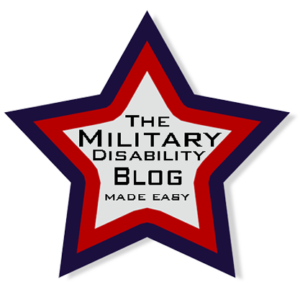TDRL vs. PDRL—Which is better for disability benefits?
- Published:
- Last Updated: February 13, 2025
During the DoD Disability Process, the PEB will compare the pros and cons of TDRL vs. PDRL for each service member.

If you are looking into a medical discharge from the military, you have probably heard about the Temporary Disability Retired List (TDRL) and the Permanent Disability Retired List (PDRL).
These lists are used by the DoD to categorize individuals who qualify for medical retirement with a 30% or higher rating (a rating under 30% only qualifies for a medical separation).
Knowing the differences between TDRL and PDRL will help you manage the retirement process and more successfully plan for the future.
Let us compare TDRL vs. PDRL so you can understand how they may affect your disability retirement journey.
Permanent Disability Retired List (PDRL)
The Permanent Disability Retired List (PDRL) is for service members whose unfitting disabilities are stable and unlikely to change significantly within the next 3 years.
When you are placed on PDRL, you are fully and permanently retired from the military with a 30% or higher Total Combined Rating from the DoD.
Whatever rating you are assigned by the DoD at discharge will remain unchanged for the remainder of your life, even if your conditions improve or worsen in the future.
Once placed on PDRL, you will receive full retirement benefits, including a monthly payment (calculated using this formula) and full medical care for life.
Temporary Disability Retired List (TDRL)
The Temporary Disability Retired List (TDRL) is for service members whose disabilities are unstable and likely to either worsen or improve significantly within the next 3 years.
When you are placed on TDRL, you are temporarily retired from the military with a minimum 50% Total Combined Rating from the DoD.
While on TDRL, you will temporarily receive full retirement benefits, including a monthly payment and full medical care.
The purpose of TDRL is two-fold:
- To give your condition the time it needs to heal outside of the military environment
- To ensure that your permanent disability rating at final discharge reflects the true long-term effect of your condition
For example, if your condition rates only 30% now but rates 70% in three years, being on TDRL will allow you to be discharged with this higher rating and receive the higher benefits for the rest of your life.
During TDRL, the DoD will call you in for periodic examinations to track the progress of your conditions. After each of these examinations, the DoD will decide to return you to full duty (if your conditions have improved enough that they are no longer unfitting), to keep you on TDRL (if your conditions are still unstable), or to move you to PDRL (if your conditions have stabilized but are still unfitting).
You can only be on TDRL for 3 years, so after this period, the DoD will either return you to full duty or move you to PDRL, even if your conditions have not stabilized.
TDRL vs. PDRL
When comparing TDRL vs. PDRL, there are many similarities and a few big differences. Here’s a table that simply outlines TDRL vs. PDRL.
| TDRL | PDRL | |
| Retirement Status | Temporary, could return to duty | Permanent |
| Period | Temporary (max. 3 years) | Permanent |
| Medical Exams | At least every 18-24 months | None |
| Changes to Ratings | Could increase or lower | None |
| Monthly Payment | Yes | Yes |
| Healthcare | Yes | Yes |
| Ability to work as civilian | Yes | Yes |
| Ability to receive VA Benefits | Yes | Yes |
PDRL is best if your conditions are stable, and you want to permanently transition to civilian life. With PDRL, you will have consistent benefits and be able to confidently plan your future with certainty and stability.
TDRL is best if you are hoping to return to duty or if you are hoping for a higher permanent rating at discharge.
Both lists are designed to give you the best chance to receive the most beneficial benefits for the long-term.
Ultimately, your situation will determine whether you will be better off on the Permanent Disability Retired List (PDRL) or the Temporary Disability Retired List (TDRL).
Recent Posts
TDRL vs. PDRL—Which is better for disability benefits?
Leukemias and Multiple Myelomas NOW on the Presumptive List
Two MORE Conditions added to the Burn Pit Presumptive List
The 2025 VA Disability Rates are here!
About Us









